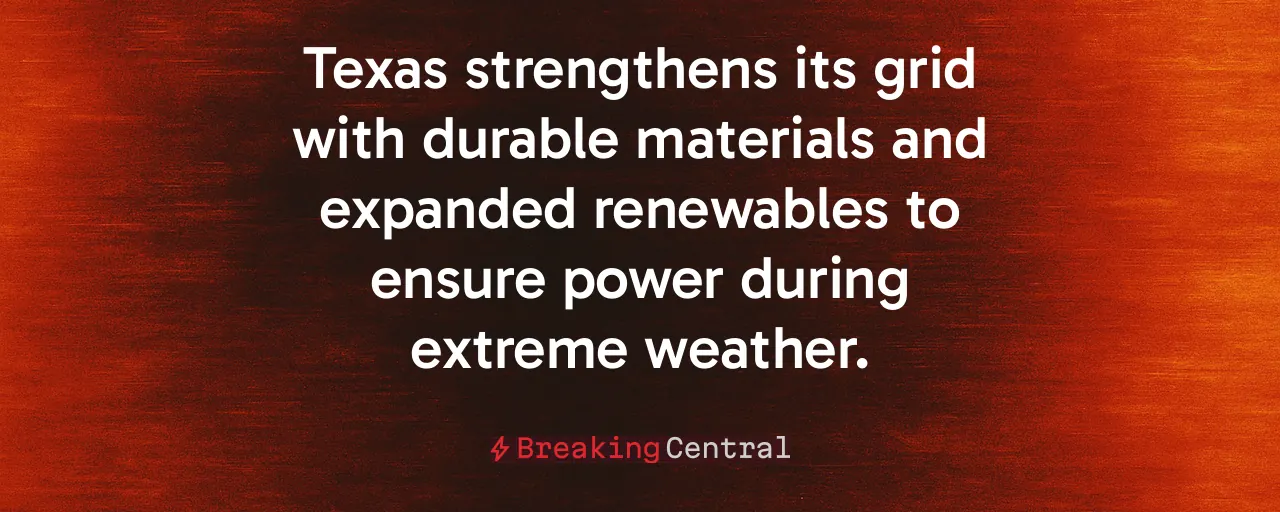A Grid Forged for the Fight
Hurricanes threaten Texas with wind and rain, and they challenge the very systems that keep our state alive. Governor Greg Abbott understands this, and his recent meeting with energy leaders from CenterPoint, Entergy, and others shows Texas is built to endure. Millions of families, hospitals, and businesses rely on our power grid when storms strike. The mission is clear: ensure electricity flows, no matter the odds.
At the State Emergency Operations Center, Abbott discussed strategy and demanded results. CenterPoint has swapped out 26,000 wooden poles for composite ones that stand firm against gales and buried 400 miles of lines to dodge debris. Entergy's Category 5 drill slashed restoration times by 17 percent, using mobile command centers to maintain control. With $10.5 billion invested since the 2021 Uri blackout, these steps prove Texas learns from hardship and acts decisively.
As the world's energy capital, Texas sets the standard. While other states face outages, we've added 13,500 megawatts of capacity, including solar, wind, batteries, and gas, pushing ERCOT's reserve margin to a robust 27 percent. The focus is on guaranteeing Texans have light, heat, and safety when nature unleashes its worst. Why settle for less?
The stakes go beyond convenience. A reliable grid means hospitals stay operational, water plants keep running, and families avoid desperation. Abbott's focus on preparation reflects a deeper truth: in Texas, we protect our own. Every upgraded pole and pre-staged lineman is a commitment to that promise.
Texas Leads, Washington Follows
Some insist federal oversight is the only way to secure our grid, pointing to FEMA's resilience grants as proof. They argue centralized rules ensure fairness and progress. Texas, however, shows a better path. Our $5 billion Texas Energy Fund drives local solutions, like dual-fuel backups for coastal hospitals, without drowning in federal bureaucracy. We move faster because we know our needs best.
Compare that to states like California, where rigid mandates lead to pre-emptive shutoffs and soaring costs. Their renewable-heavy approach often falters when storms demand immediate, reliable power. Texas blends 37 percent renewables with thermal plants that deliver 76 percent of firm capacity during hurricanes. This practical balance ensures stability, demonstrating a realistic approach.
Advocates for federal control claim it prioritizes vulnerable communities. Yet Texas proves local leadership is more effective. Senate Bill 6 empowers ERCOT to safeguard residential power by limiting industrial demand during crises. The Public Utility Commission's bilingual outage tracker keeps every Texan informed, no matter their background. Our state delivers results, cutting through red tape.
Learning From Storms, Building for Tomorrow
Hurricane Beryl's 2024 outages, which left 2.2 million Texans powerless for days, hit hard. Abbott responded with action, leaving no room for excuses. CenterPoint now uses 1,250 automated sectionalizers to pinpoint and fix faults in minutes. Entergy's mock Category 5 drill deployed satellite-linked command centers, ensuring communication survives infrastructure damage. These upgrades turn past failures into future strength.
History underscores the urgency. Hurricanes Katrina and Sandy paralyzed grids, leaving millions stranded. Texas refuses to follow suit. We've reinforced 500 miles of coastal transmission with composite poles and raised 14 substations above flood risks. With 10,000 linemen ready, our response outpaces the storms. Can other regions match this resolve?
Some push renewables as the sole answer, citing studies that claim solar and wind reduce blackout risks by 47 percent. But when hurricanes shred transmission lines, quick-start gas turbines and batteries restore power fastest. Texas' 4.2 gigawatts of new storage and 2 gigawatts of gas capacity means the grid is built for reality.
Reliability Over Rhetoric
Washington's $10.5 billion in DOE grants for decarbonization grabs headlines, yet it risks sidelining what Texans value: a grid that never quits. Texas invests in practical tools, 100 micro weather stations, pre-staged breakers, and $196 million in mobile microgrids, while using federal funds on our terms. We are here to keep the lights on, not to chase trends.
Abbott's directive to utilities was unmistakable: deliver or answer for it. Providers must submit hurricane playbooks and test communication systems by mid-June. With 111 gigawatts of generation against an 87-gigawatt peak, Texas stands ready. These numbers translate to lives saved, businesses preserved, and communities unbroken.
Texas faces its challenges head-on, though it is not flawless. Uri taught us to weatherize; Beryl showed us where to reinforce. Each storm hones our edge. As hurricanes approach, Texas will shine because our state demands resilience, not because of distant mandates. Who stands stronger?
